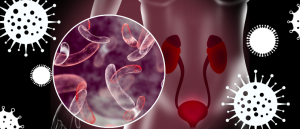
BioTechniques News
Aisha Al-Janabi

Escherichia coli may be more capable of becoming antibiotic resistant through evolution than previously thought.
In a recent study, researchers have found that Escherichia coli (E. coli) may have a greater capability to become resistant to antibiotics than previously thought. The international team, led by Andreas Wagner at the University of Zurich (Switzerland), mapped 260,000 mutations in E. coli and found that 75% of all possible evolutionary pathways led to a high level of antibiotic resistance to the antibiotic trimethoprim, which is commonly used to treat urinary tract infections caused by E. coli. This finding casts doubt on current theories of evolution and adaptation.
One technique that researchers use to study the evolution of antibiotic resistance in a bacterial population is to generate a fitness landscape. Fitness landscapes are a visual representation of the fitness of an organism, with each point representing a different genotype and the height of the peak representing how well that organism is adapted to its environment. Ideally, an organism wants to find the best genotype for survival, or the fittest genotype, indicated on the landscape by a high peak.
 Sophisticated artificial bladder model reveals cause of recurring UTIs
Sophisticated artificial bladder model reveals cause of recurring UTIs
A novel 3D cell model has revealed that bacteria capable of hiding in the bladder wall may be a cause of ineffective diagnoses and treatment of UTIs.
Current theoretical models predict that, in landscapes with multiple peaks of fitness, organisms at lower peaks are unlikely to reach peak fitness. This is because it would require the organism to ‘cross’ a genotype of lesser fitness. However, testing this theory has been difficult due to the lack of experimental data.
In the study, the team looked to address this by creating one of the most complete fitness landscapes to date of the gene encoding dihydrofolate reductase, a protein vital for E. coli’s survival and commonly targeted by antibiotics. Using CRISPR-Cas9 gene editing technology, the team created 260,000 mutants by exhaustively mutating sites in the protein known to confer resistance to trimethoprim. Then, by deep sequencing mutants in an antibiotic-containing environment, they were able to identify fitness peaks and the evolutionary paths to these peaks.
The team found that the fitness landscape was rugged, with many peaks of low fitness. Fitness peaks were highly accessible to evolving populations of E. coli by many different pathways; it took surprisingly few mutations to become a high-fitness genotype that granted antibiotic resistance. Overall, 75% of accessible evolutionary pathways resulted in high levels of antibiotic resistance.
“This has profound implications not only in biology but beyond, prompting us to reevaluate our understanding of landscape evolution across various fields,” Wagner said. “We need to shift from abstract theoretical models to data-informed, realistic landscape models.”
The post Mapping the fitness landscape of <i>E. coli</i> appeared first on BioTechniques.
Powered by WPeMatico
